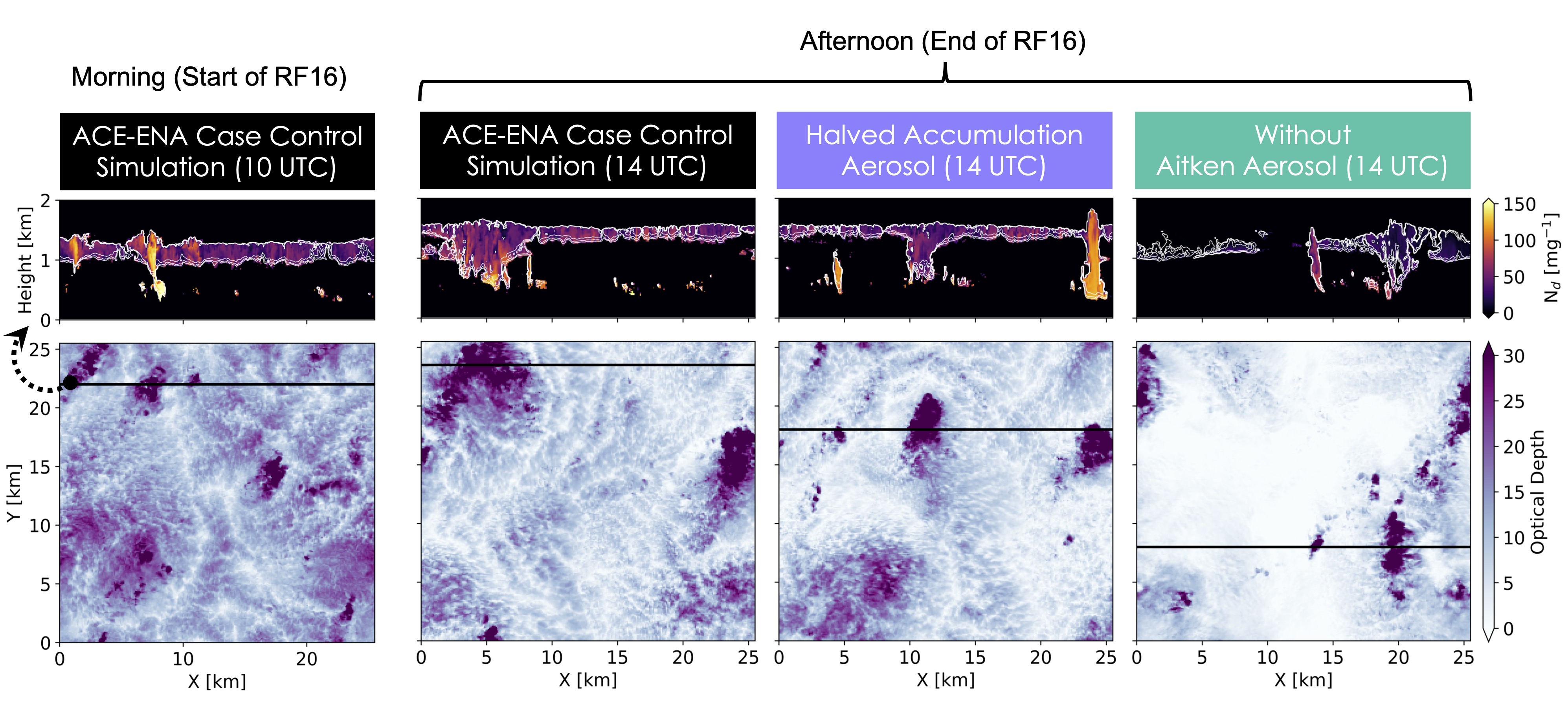Small aerosols help decoupled cloud layers resist precipitation depletion over the North Atlantic
Submitter
Blossey, Peter — University of Washington
Wood, Robert — University of Washington
Area of research
Cloud-Aerosol-Precipitation Interactions
Journal Reference
Science
Low-lying marine clouds reflect more sunlight back to space compared to the dark, underlying ocean surface, helping to cool the earth’s climate. Transitions of these clouds from overcast to broken conditions modify cloud cover and the resulting cooling. Computer simulations of a case study during the U.S. Department of Energy Atmospheric Radiation Measurement (ARM) user facility's Aerosol and Cloud Experiments in the Eastern North Atlantic (ACE-ENA) field campaign are used to understand the impact on cloud transitions from changing concentrations of different sizes of aerosols. Aerosols are airborne particles that water can condense on to form cloud droplets. In our simulations, we demonstrate that ultra-fine aerosols (tens of nanometers across, typically too small to form cloud droplets) can play an important role in controlling cloud transitions by helping clouds to form droplets when the larger aerosols have been depleted through precipitation.
Impact
Cloud droplets form on particulate matter, known as aerosols, in the atmosphere. Most of the aerosols that develop into cloud droplets are larger than about 100 nanometers but when the concentration of those aerosols is small or there are strong updrafts, cloud droplets can form on smaller, ultra-fine aerosols. These ultra-fine aerosols have been hypothesized to be important in forming cloud droplets in the Southern Ocean, where man-made sources of aerosol are limited. This study shows that ultra-fine particles may also play a role in Northern Hemisphere regions when larger particles are depleted, modulating cloud transitions and how much radiation clouds can reflect back to space.
Summary
We developed a case study of an evolving low-cloud system with cumulus rising into a stratocumulus layer using flight observations taken on July 15, 2017 during the ACE-ENA field campaign near the Azores Islands in the eastern North Atlantic. That day featured low concentrations of accumulation-mode aerosols (diameters larger than ~100 nanometers, the dominant source for cloud droplet formation) but large concentrations of smaller, Aitken-mode (or ultra-fine) aerosols below and above the cloud layers. We integrated these observations with a high-resolution computer model to capture the evolution of the aerosol-cloud-precipitation system over the day, enabling us to study the details of aerosol sources and sinks and the influence of large-scale meteorology. Aitken aerosols contribute significantly to cloud formation, especially when changes in meteorology induce stronger convection and thicker clouds. Removing ultra-fine aerosols from the simulation accelerates cloud break-up. However, we found a different effect when the concentration of accumulation-mode aerosols was reduced instead: Aitken aerosols increased their role in cloud droplet formation and helped to sustain the stratocumulus cloud layer. This suggests that ultra-fine, Aitken aerosols could play an important role in modulating cloud transitions and thus the effect of cloud transitions on the climate system.



